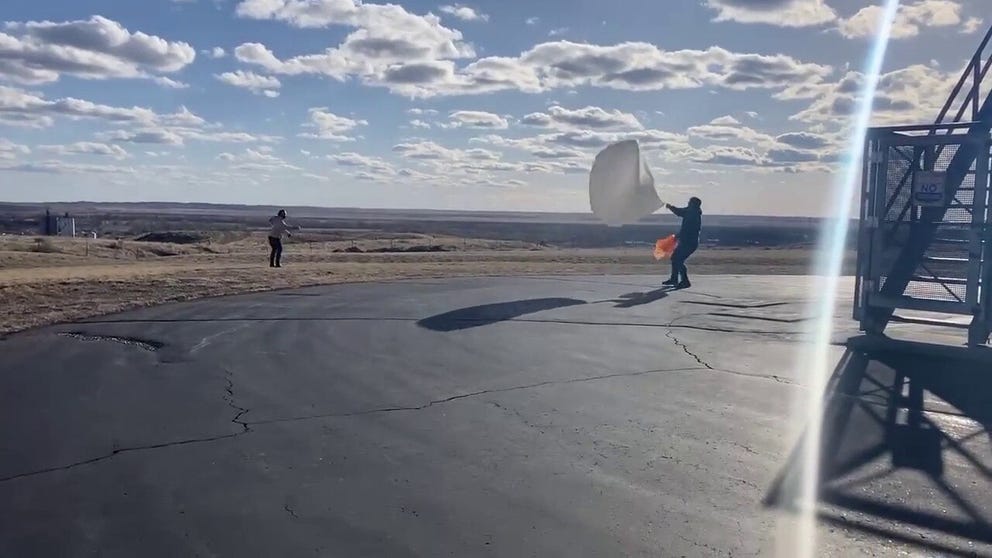Watch: Meteorologists attempt weather balloon launch in near 50 mph gusts
Imagine carrying out a massive helium-or-hydrogen-filled balloon into a roaring gale and trying not to let go until just the right time so that the balloon has a chance to get airborne.
NWS launches weather balloon in strong wind
Meteorologists had quite the adventure launching a weather ballon Thursday night in Glasgow, Montana as winds gusted near 50 mph. (Video: NWS Glasgow)
GLASGOW, Mont. -- Twice a day, meteorologists with the National Weather Service launch a weather balloon into the upper atmosphere to collect critical data for forecasts.
Some launches are easier than others…
It was a rather windy evening in Glasgow, Montana Thursday with gusts in the region measuring over 45 mph. Glasgow's office reported a peak gust of 48 mph.
So imagine carrying out a massive helium-or-hydrogen-filled balloon into a roaring gale and trying not to let go until just the right time so that the balloon has a chance to get airborne.
MORE: Helium shortage forces NWS data collection to float new solutions
Mission complete, though the NWS says this video shows their second attempt. No word what happened on the first unsuccessful attempt.
A Twice-Daily Challenge
NWS offices across the country typically launch weather balloons twice a day, once around 7-8 a.m. Eastern and again around 7-8 p.m. Eastern.
MORE: Weather balloon goes on 117-mile ride over Lake Michigan
The balloons carry a box of instruments called a radiosonde that helps play a critical role in weather prediction. The data collected by the radiosonde is ingested into the computer forecast models used by meteorologists to help predict weather conditions such as rain, snow, temperatures and winds.
Weather offices across the world launch more than 900 balloons twice daily. The NWS is responsible for 92 of those sites.
